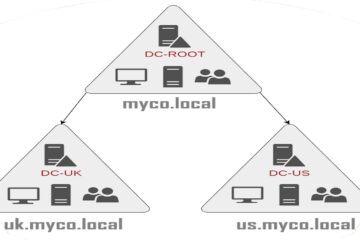As the famous meme puts it: well, yes and no.
The RISC-V open-source instruction set architecture (ISA) has been hailed as a game-changer in the chip industry, promising new levels of customization, affordability, and innovation for embedded devices and beyond. Especially in light of the inherent technical limitations of more mainstream ISAs like the x86 family.
However, RISC-V’s greatest strengths, which are its openness, transparency, and extensibility, could also prove to be serious vulnerabilities if not carefully managed.
Transparency Undermines Security
Open-source software has long grappled with the inherent tension between transparency and security. While open development invites “many eyes” to audit the code and potentially catch bugs and vulnerabilities faster, it also enables bad actors to more easily identify and exploit weaknesses.
“A Survey on RISC-V Security: Hardware and Architecture,” one of the most comprehensive security-focused RISC-V published works, further highlights this double-edged sword analogy. It puts upfront the open nature of RISC-V for greater public scrutiny and collaboration in the design process, which can help in building more secure platforms. However, the same openness also provides attackers with a detailed understanding of the system’s inner workings, as highlighted by the survey. This then makes it easier for them to uncover and take advantage of security weaknesses and vulnerabilities that may be present in the architecture.
Think of it like a public recipe book. Everyone can see the recipes and suggest improvements, which helps make the dishes better. But at the same time, anyone can find out the secret ingredients and cooking steps, including people who might want to tamper with the food or add erroneous details to the recipes (that could be harmful to others).
Good Intention Can Outsmart Malice?
On the better side of the double-edge, RISC-V’s greatest defense actually hinges on the strength and vigilance of its open-source community. The RISC-V Foundation itself posits that with many collaborators stress-testing the architecture and sharing knowledge, potential weaknesses will be uncovered and rectified faster compared to closed, proprietary ISAs. Techniques like fuzz testing, blue team/red team exercises, and formal verification can be applied more readily.
Then again, one could argue that relying solely on good-faith contributors to outpace dedicated and sophisticated attackers may prove to be overly optimistic. We’ve seen major processor vulnerabilities like Meltdown and Spectre emerge even in closely guarded proprietary designs. As such, the proliferation of RISC-V cores, SoCs, and development boards will make comprehensive security validation increasingly complex.
To add, the same survey mentioned earlier also highlighted other areas like logic locking, electromagnetic injection attacks, side-channel prevention, and control flow integrity as needing further work in the RISC-V context.
Knowledge of Design as an Exploit
Despite the RISC-V community rising to the security challenge, some risks may be fundamentally inflexible. Aside from complete access, total invisibility is also a major issue, allowing attackers to craft exploits with devastating precision and stealth. Detailed knowledge of branch prediction units, cache architectures, pipeline stages, and speculative execution behavior can reveal subtle channels for leaking data, subverting access controls, or hijacking execution. Exploits from these points could be extremely difficult to detect or prevent, if not just inherently impossible.
The RISC-V security survey also notes that “covert channels can leak secret data without explicit information flow.” It references additional research indicating that covert channel information leakage is widespread, even in average complexity processors with sequential pipelines. This clearly showcases the inherent risk of an open ISA: attackers can study every aspect of the design to find clever new exploits, without them being openly detected immediately.
Supply Chain Security Holes
RISC-V’s openness has a flip side in the hardware supply chain as well. Since any foundry can manufacture RISC-V chips, ensuring secure and trusted fabrication becomes more difficult, especially for cost-conscious IoT use cases. The barrier is lower for unscrupulous manufacturers to produce counterfeit or maliciously modified RISC-V silicon that finds its way into end products.
You could have a situation where a newly formed service provider that built his server backbone by using hardware based on such architecture, and is hosting something like an online casino gaming platform, have his user’s data compromised. Attacker could wait for a while until a critical mass and database of players is formed, after which unbenounced to everyone in the IT administration chain, they could just pull everything down, from players credit card data used for funding slot or table games, to other sensitive data like addresses, phone numbers, etc.
On the flip side at least, securing this front is mostly only focused on creating new hardware security and better vulnerability detection technologies to address the risks. To that end, the establishment of robust trust anchors, secure boot processes, and hardware roots of trust, plus its standardization efforts are still making great strides as you read this article.
The Eternal Double-Edged Sword
While this may all sound like meaningless fearmongering, these points do warrant further research and refinement. RISC-V’s open ISA may hold immense promise, but it also brings daunting security implications. Transparency has always been a double-edged sword, and in this particular case, it empowers both contributors and attackers alike.
Therefore, the growing RISC-V ecosystem must remain vigilant to keep malicious exploitation of the architecture’s openness in check. After all, advanced security measures, such as verification techniques, hardware module design, and standardized security protocols offer the other side of the coin, the opposite side of the edge.






0 Comments